I took a visit to Norbury Weir on the River Dove which is right on the Staffordshire/Derbyshire border north of Uttoxeter. I was there watch the Atlantic Salmon and Sea Trout making their way as they migrate upstream to spawn.
The weather was perfect for the fish, but terrible for photography it was one of the darkest days I remember meaning I not only had to shoot with very high ISO settings (up to 6400) but also open up the aperture far more than I would of liked just to try and get a fast enough shutter speed. None of it was good enough and coupled with the dull and flat light, the photos are not exactly what I was hoping for, but at least I got to spend 2 hours watching an amazing spectacle.
It’s quite hard watching these fish attempt time after time to clear the weir without any luck. Norbury Weir is quite long and as the water was only a few inches deep, the big fish struggle to get their powerful bodies in a forward momentum. This weir really needs modification to include a Fish Ladder such as the ones further downstream, but it seems this debate has been going on between the fishing clubs and land owners for quite sometime.
{Click image for a higher resolution}
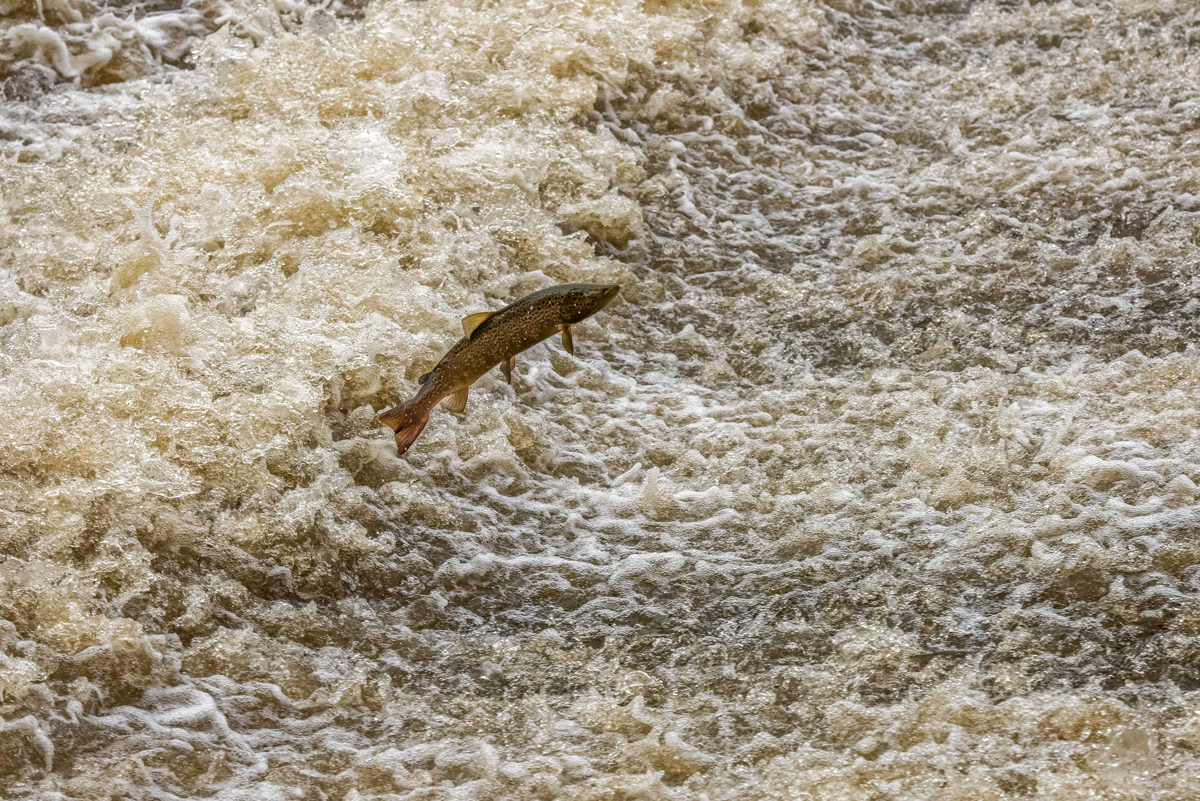
I was lucky enough to bump into the local Fish Officer/Warden who gave some fantastic information about the spawning process. The fish, particularly the Salmon are a nice red/pink colour this is a sign that they’ve been in fresh water for a long time (and apparently won’t taste very nice either which is great news as they are less likely to be poached!) and he thinks that they may have been in the river since last Spring waiting to swim further upstream. It’s amazing to think that these fish have come a long way from the North Sea, up the Humber Estuary, into the River Trent before branching off into the River Dove and upwards. This is closing in on 200 miles! Fantastic.
The officer also told me that should the water level rise a little more (and we have been getting a lot of rain!) the larger fish will be more successful in clearing the Weir. Should they not get upstream any further than all is not lost as they will Spawn in the area instead. This process will happen once the water drops below 5 degree which I imagine is a lot cooler than it currently is. I did watch a small Sea Trout swim up the edge of the Weir in front of me and make it right to the top. I lost sight of it, but didn’t see it come back down, so I almost felt like cheering as it must of cleared the top.
As I mentioned already, the light was really really bad so I knew I wasn’t going to get any sharp, super detailed shots, but thought I’d still share some of the shots I did get. Fish jumping out of fast moving water is quite a tricky subject to capture as the camera autofocus just sees lots of movement and is difficult to keep the focus on the fish. There’s an easier method, but one that involves patience. When I arrived, the first thing I did was to setup my 2nd camera to record some video footage (more details below). I then got my other tripod and D810 mounted with my 70-200mm and just waited and watched for a while to see where the fish were jumping most. I then pointed the camera at this area. Normally under good light, I would of set a smaller aperture (larger f-stop number) such as f8 or f11 which meant a larger depth of field meaning a jumping fish would have a better chance of being in focus. This is another reason why I didn’t shoot with a longer lens as the longer the lens the shallower the depth of field. However, as the light was so bad, I was forced to set a larger aperture (lower f-stop number) which meant I couldn’t guarantee a fish in frame would be in focus. Once I was happy with the focus, I switched it to manual focus to stop the camera looking for focus on each shot. I then attached a shutter remote control and waited until a fish was in the frame and I would then fire off a few shots for each jump.
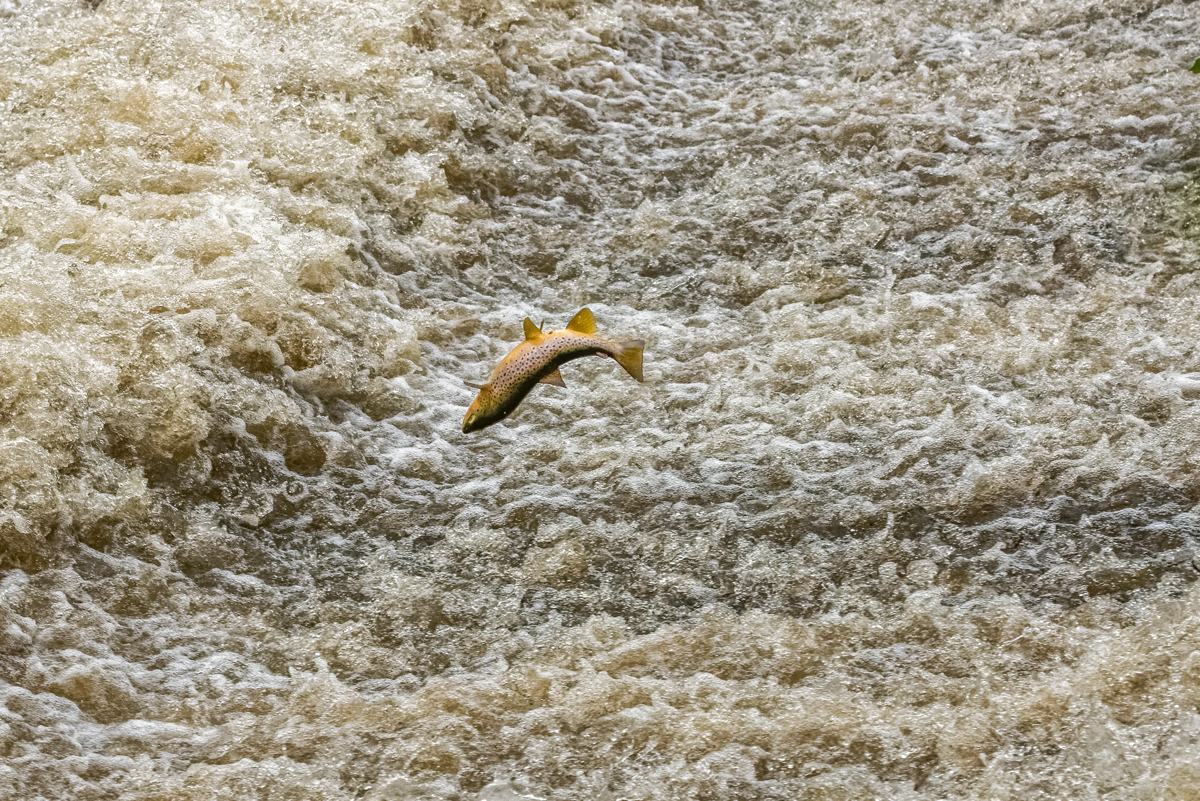
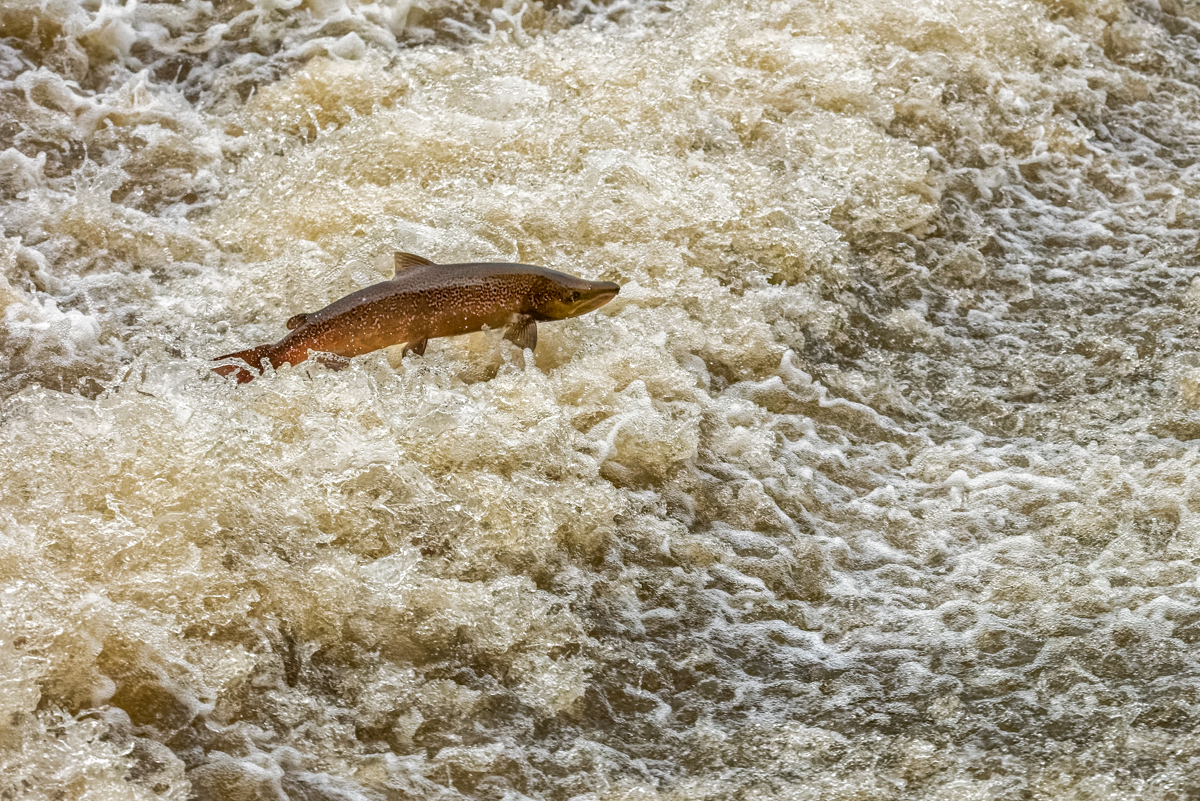
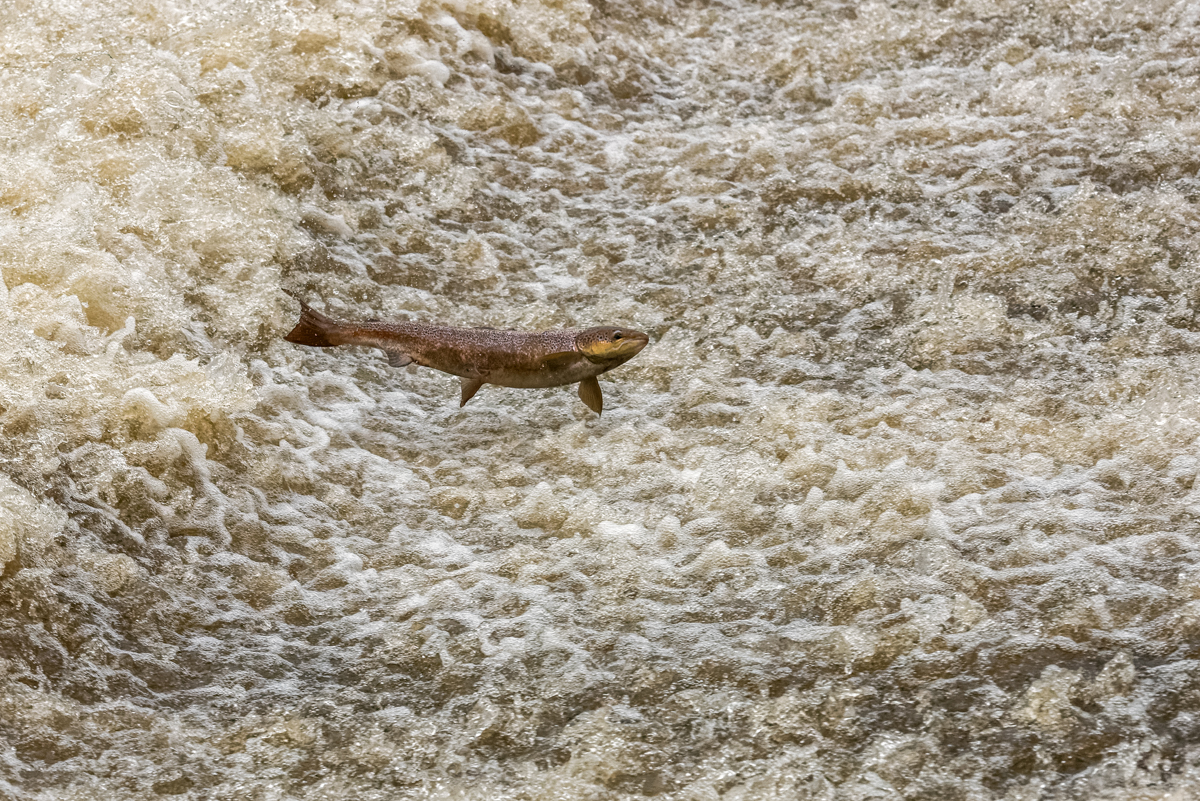
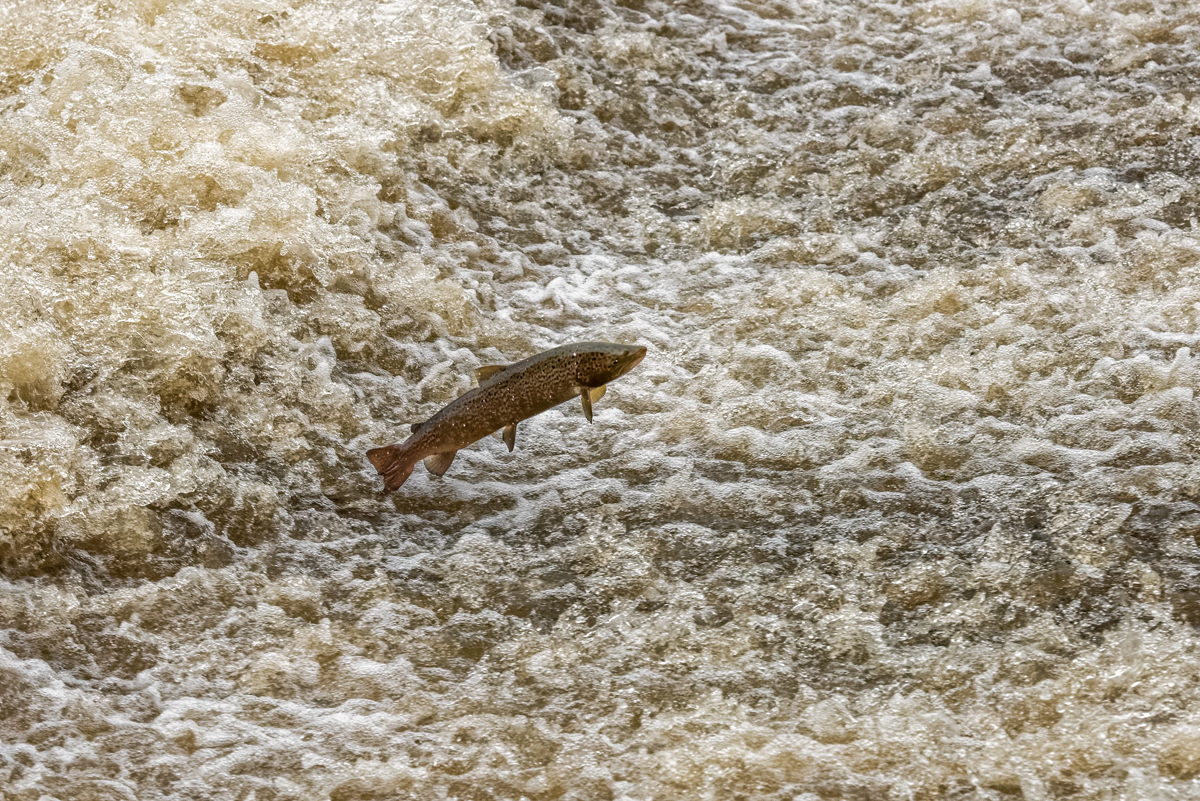
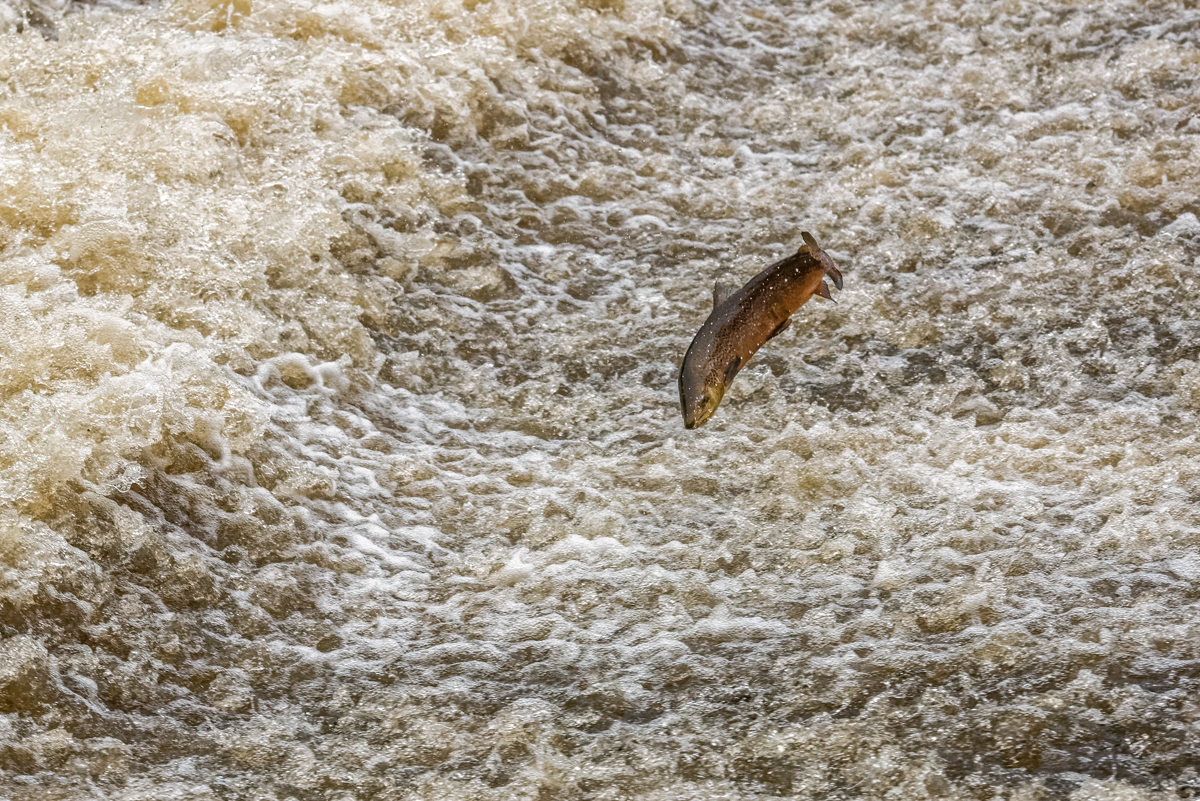
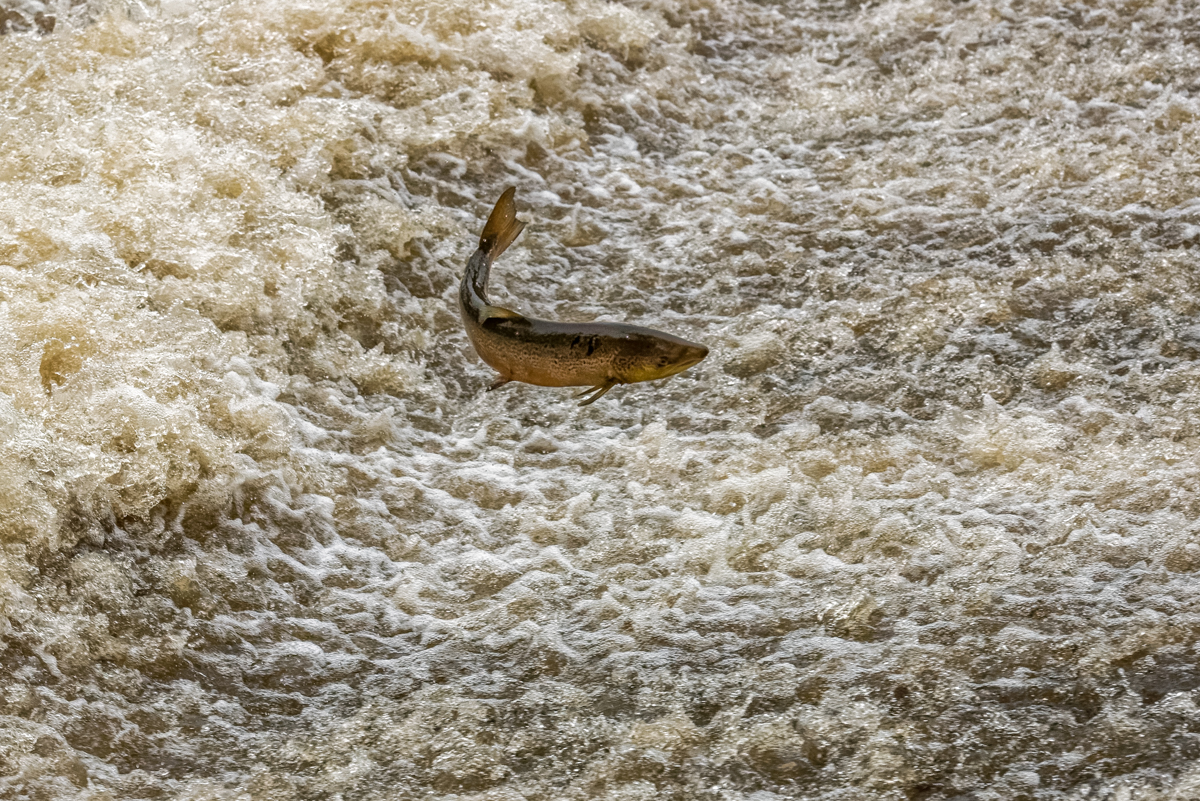
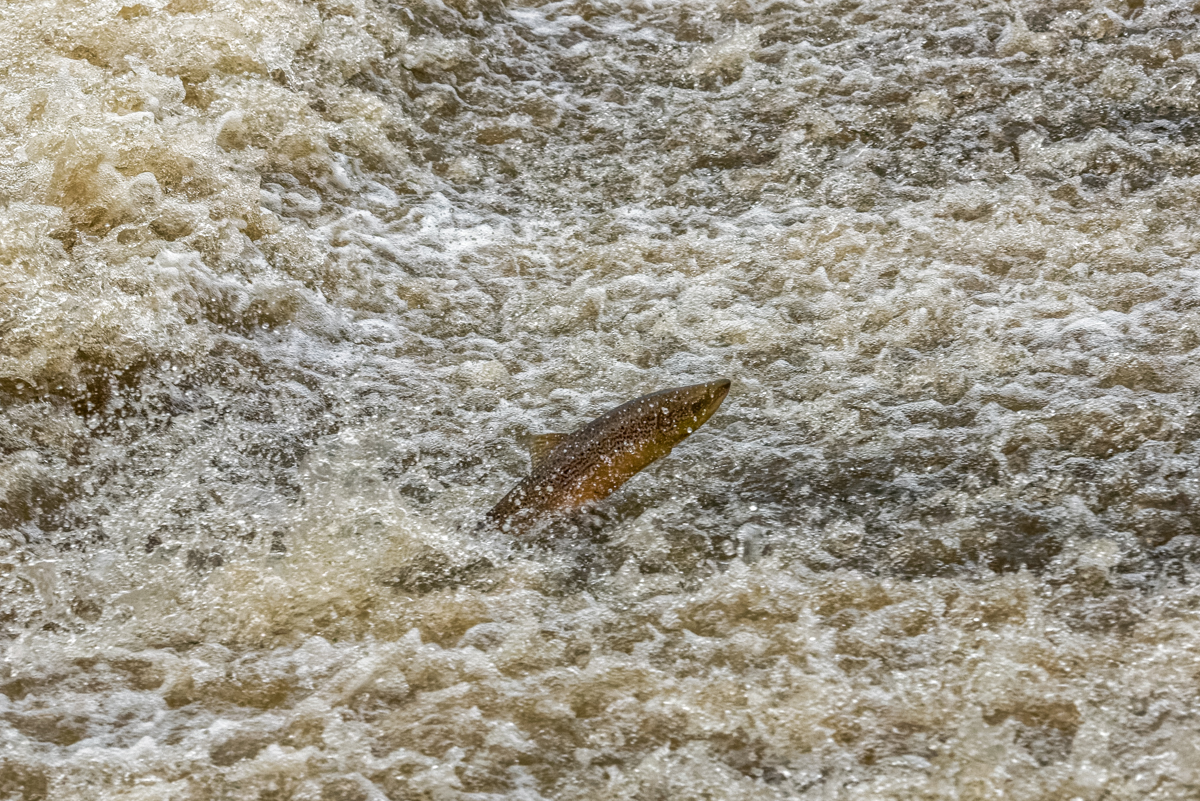
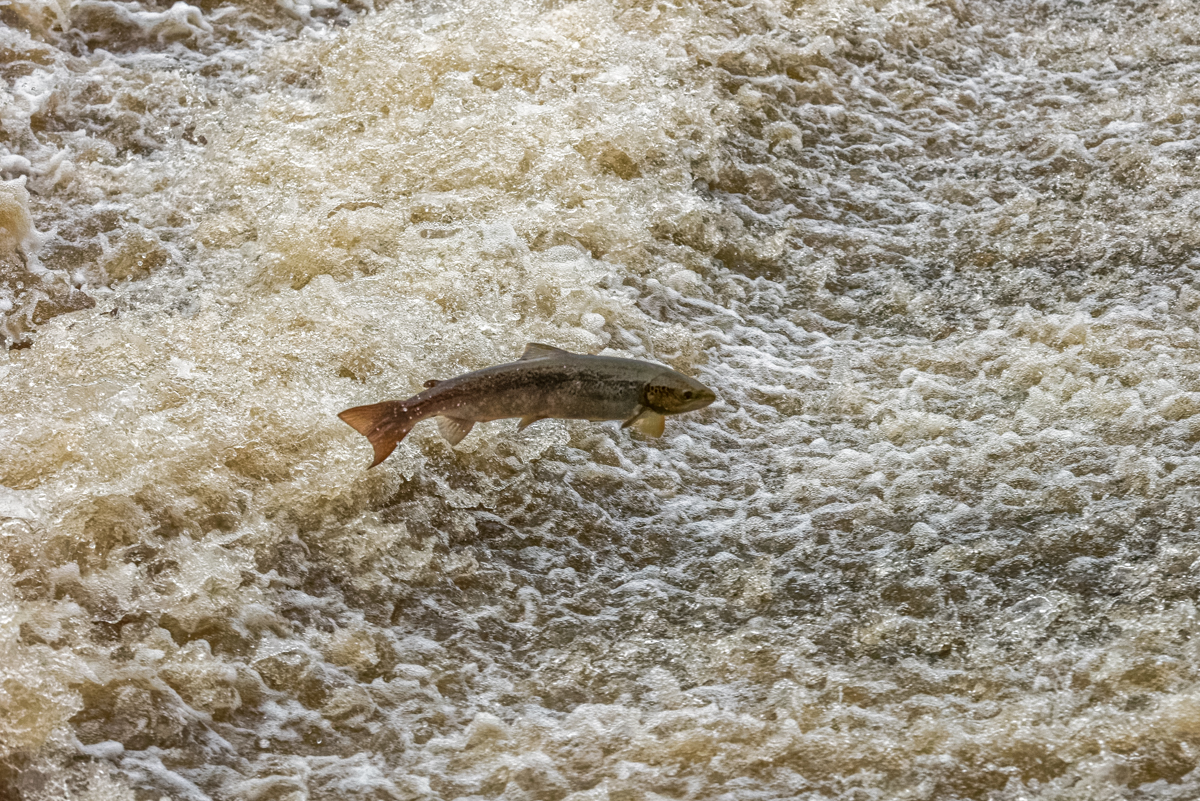
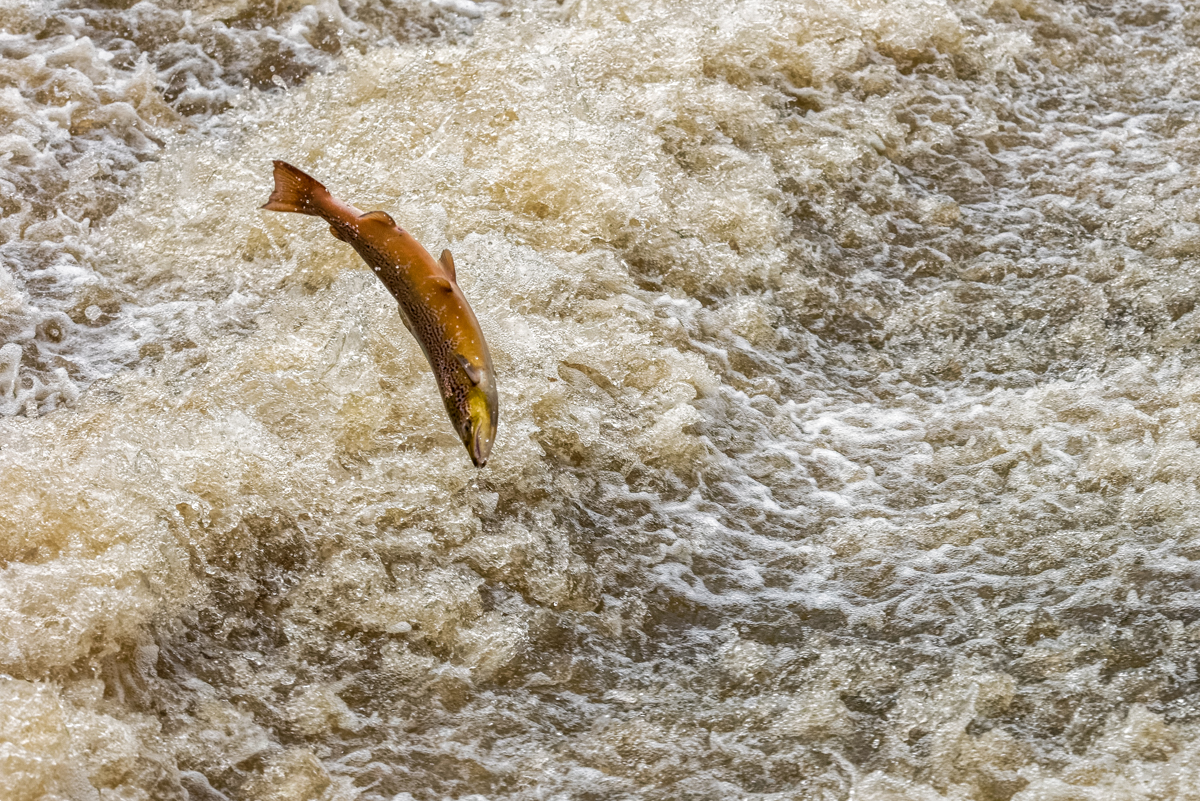
VIDEO: I set up my D7100 with 50mm lens on a tripod and left that to record some video footage which you can see below. The footage is a selection of clips edited from around one and half hours.
{Remember to watch in HD if possible}